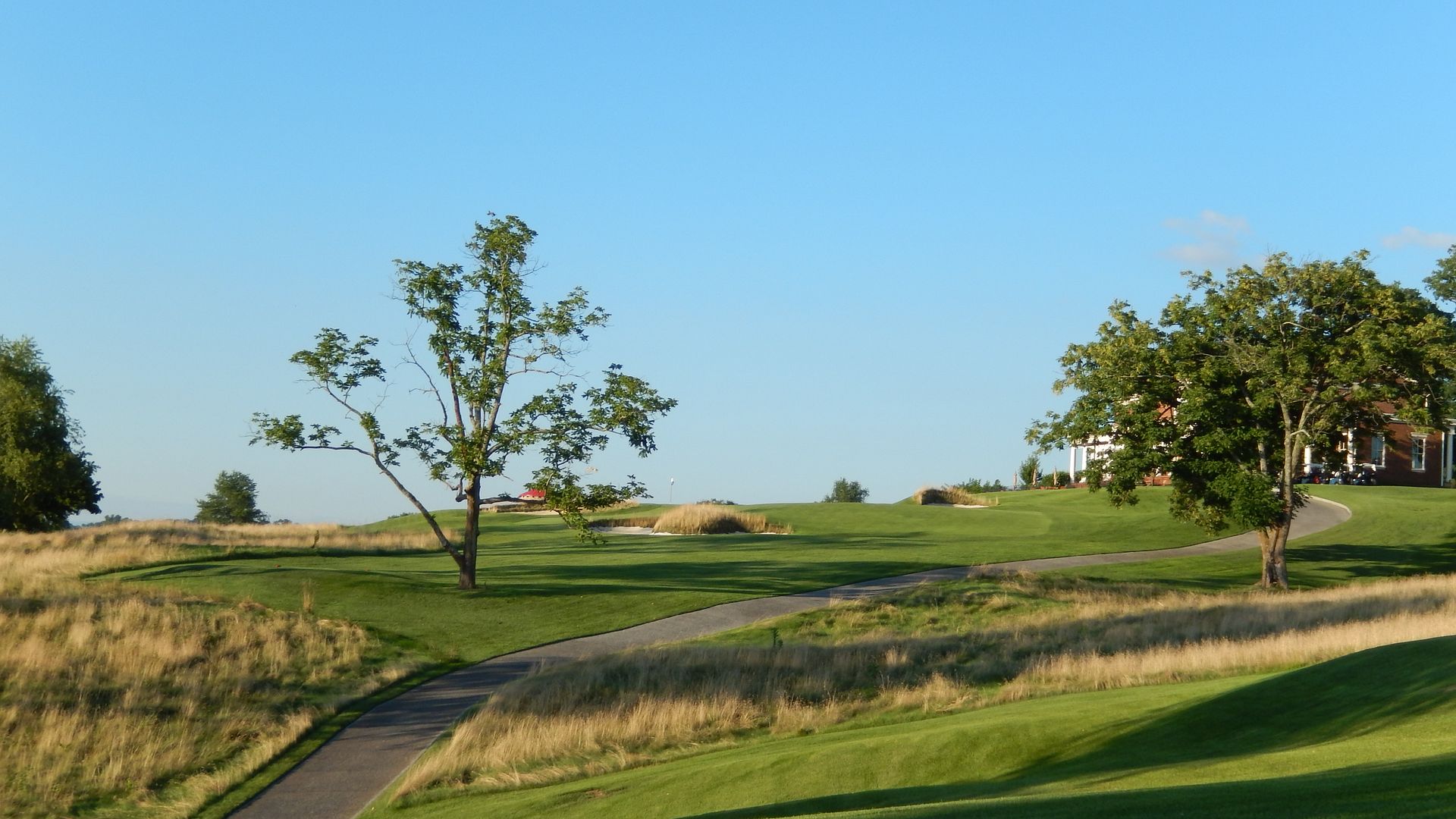At the 14th, a 370 yard par-4, the golfer will want to play his approach from the left side of the fairway. Finding the left side requires a tee shot that lands in the right half of this canted fairway.
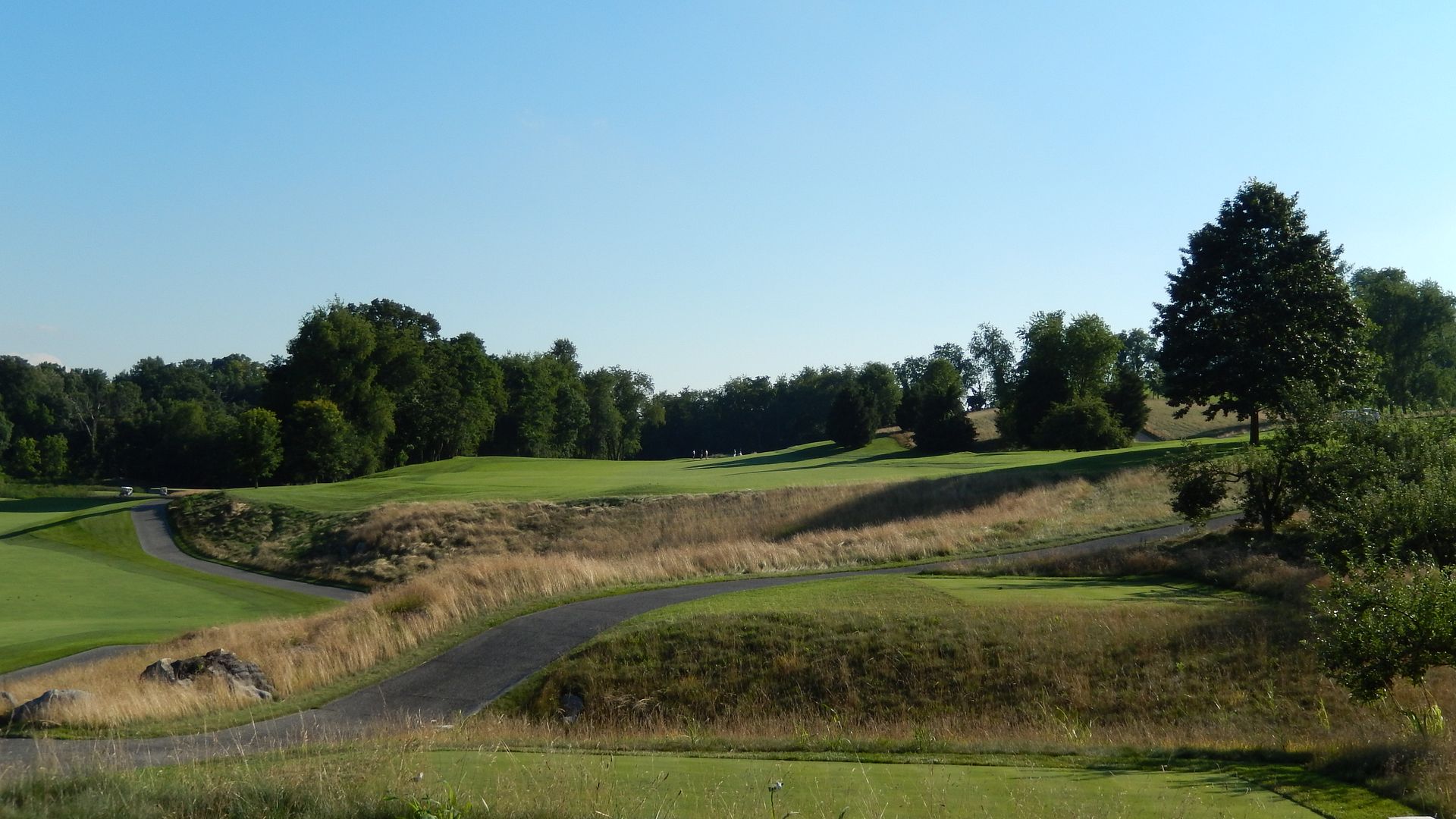
While the approach looks innocent, it is the (maybe too) severely right-to-left sloping green that is the hole's primary defense. De-greening on a putt from above the hole must be a regular occurrence.


How to get from the top of the ridgeline to the bottom? Weed offers a very good drop-shot par-3 where blindness once again plays a role and intimidation, in the form of a deep, fescue-lined bunker, steers the golfer toward the deeper trouble.
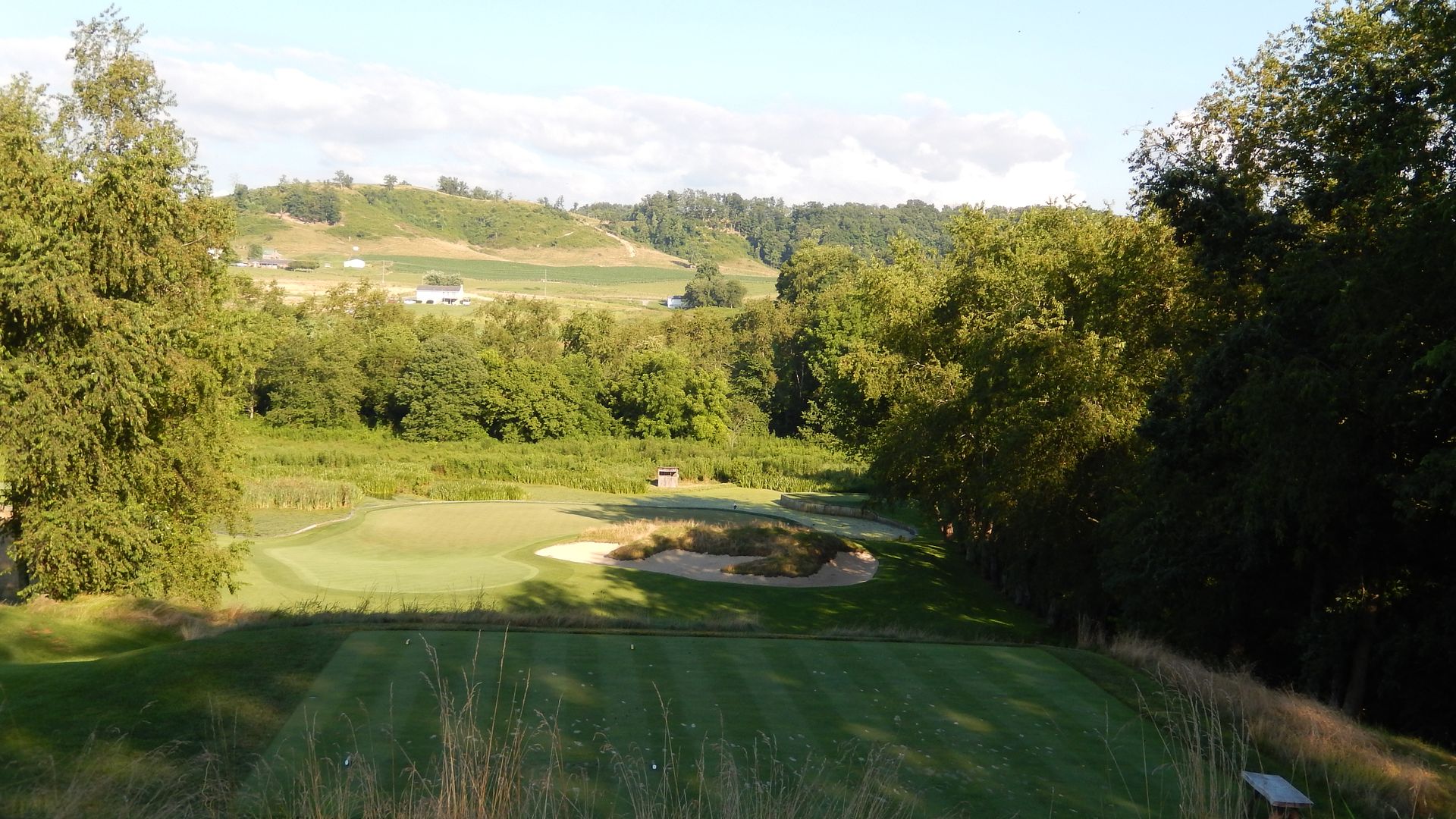
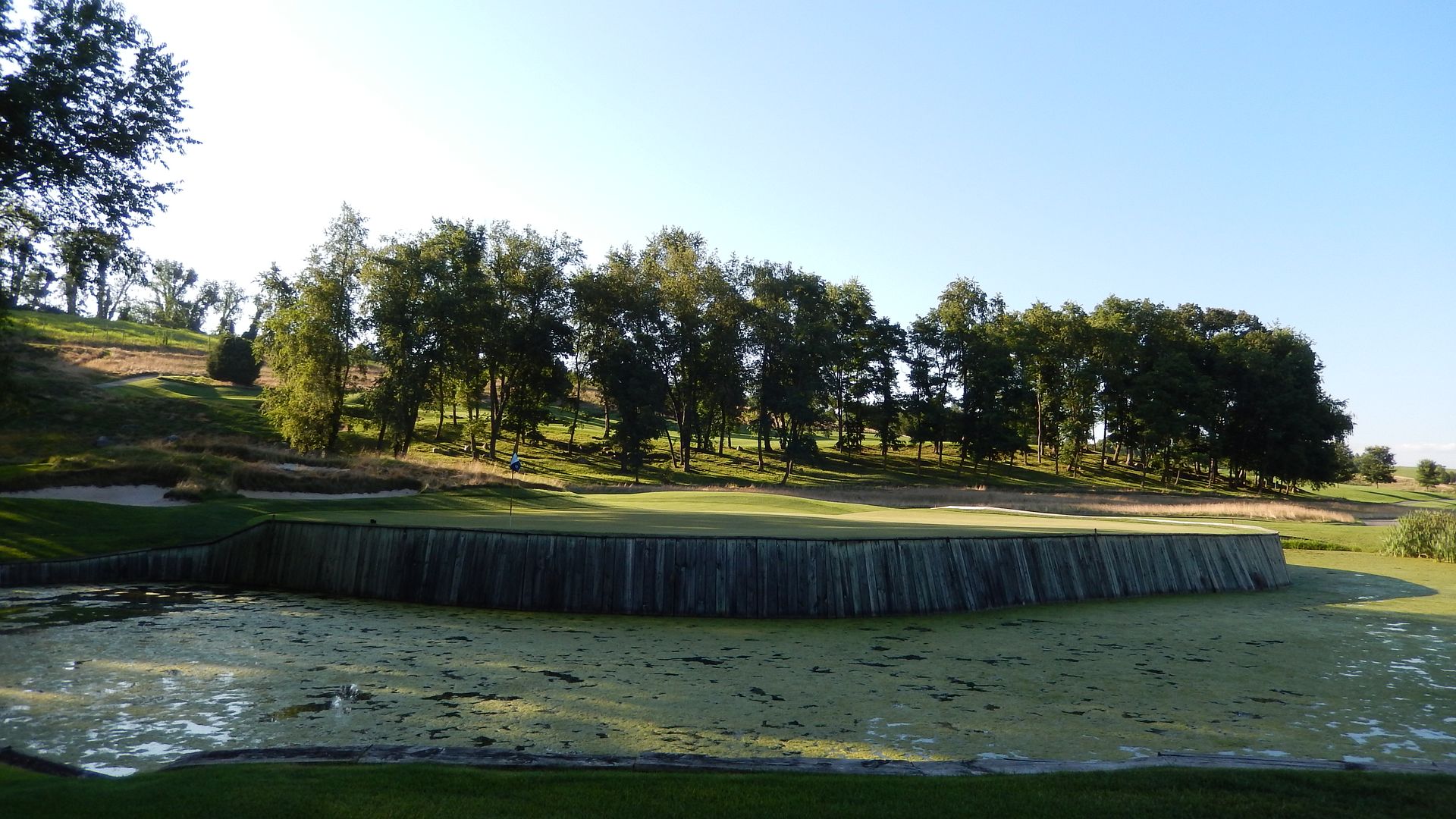
The back-to-back par-4s at 16 and 17 cover near 900 yards and provide a stern test. The tee shot at the 16th looks more difficult than it plays, at least for longer hitters, as fairway hidden by the reeds awaits on the right. The shorter hitter is challenged to find a neck of fairway on the left.
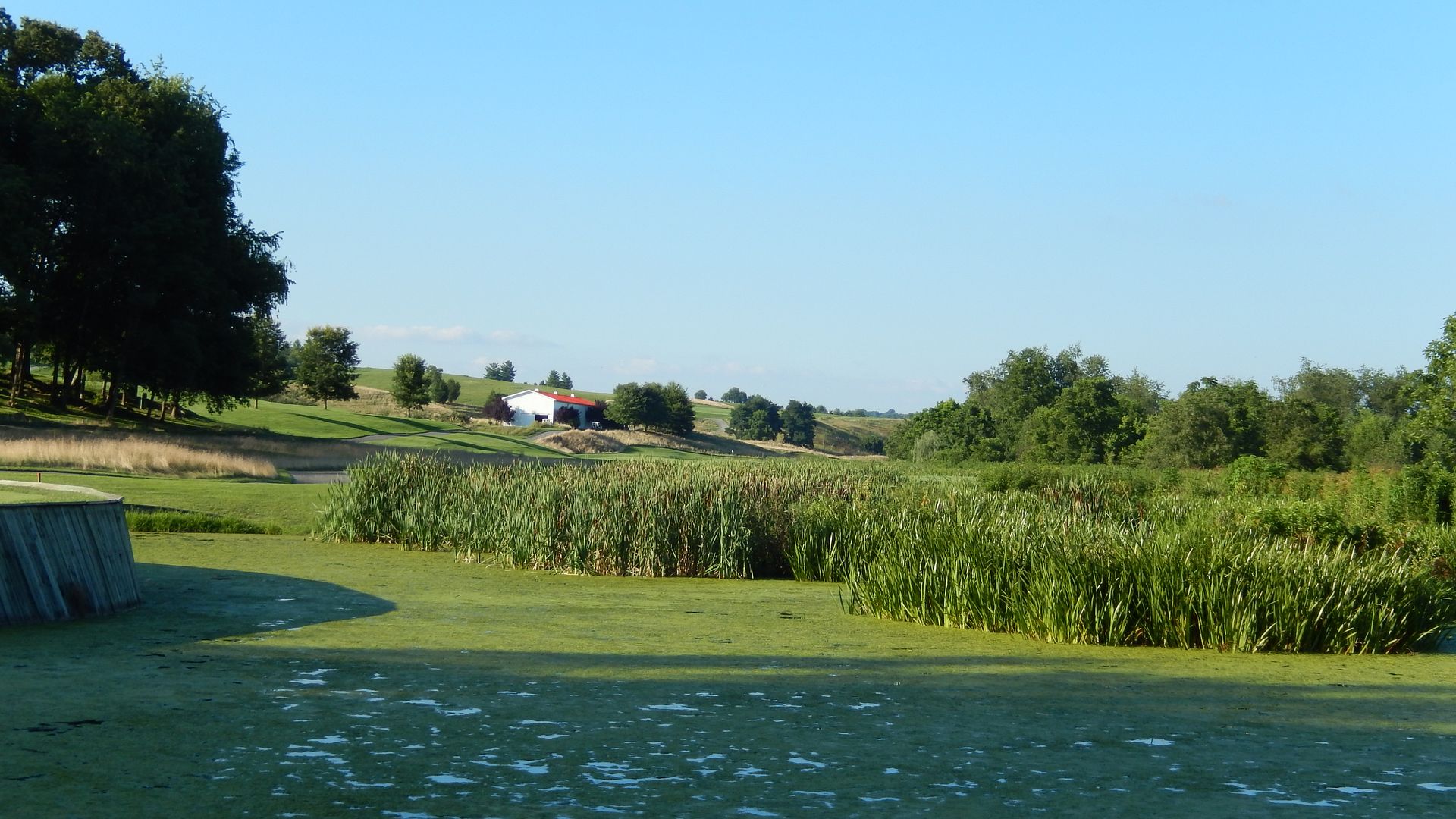
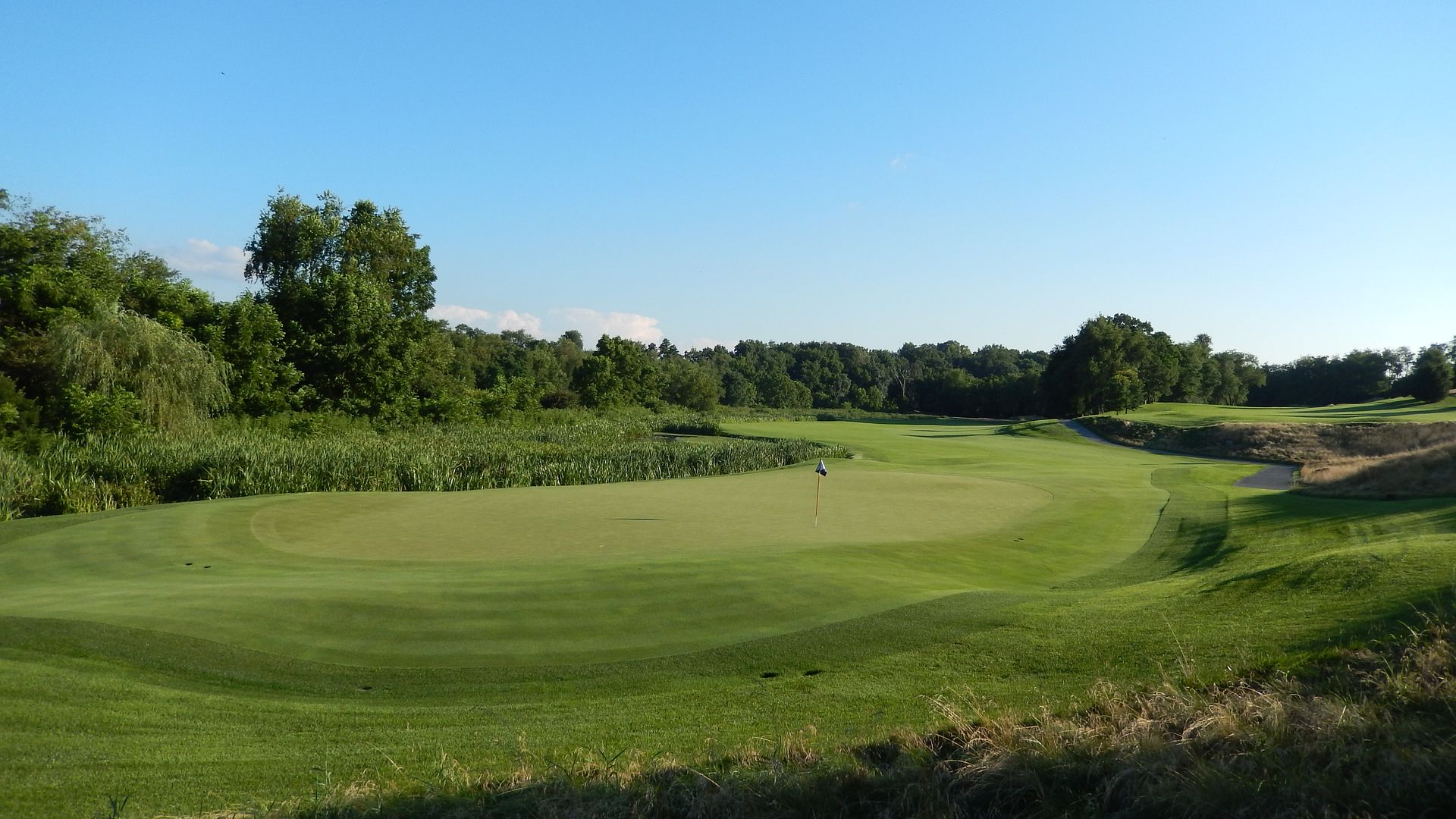
Balancing out, the creek that protected the 16th along the right, protects the 17th along the left. A classic tee shot at the 17th where the golfer is asked how much he dare cut-off to leave a shorter approach to the green. Unlike some modern versions of this hole, the golfer is offered a wide open bailout area.
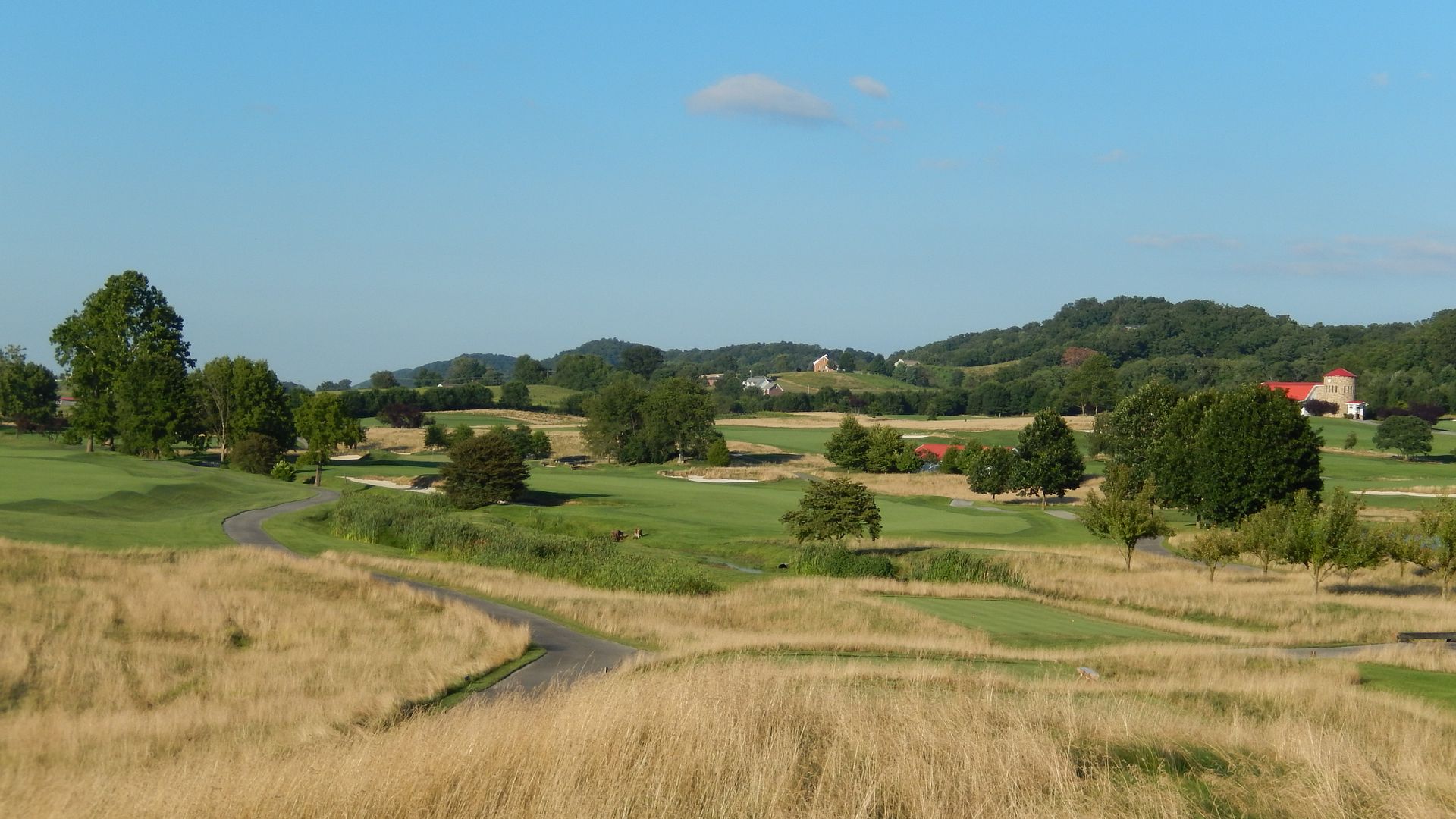
An interesting tee shot at the 520 yard 18th. For many the hole is in that 'perhaps reachable if I hit it just right' yardage and the temptation to play to the left to cut off a few yards is strong. Appropriately, the carry to the fairway is quite manageable if the golfer plays just left of centre, but as he attempts to move farther left, the carry yardage increases quickly.

The 18th green is set on a plateau and those choosing to lay up will be left with an intimidating, semi-blind approach to a green with a massive false-front.
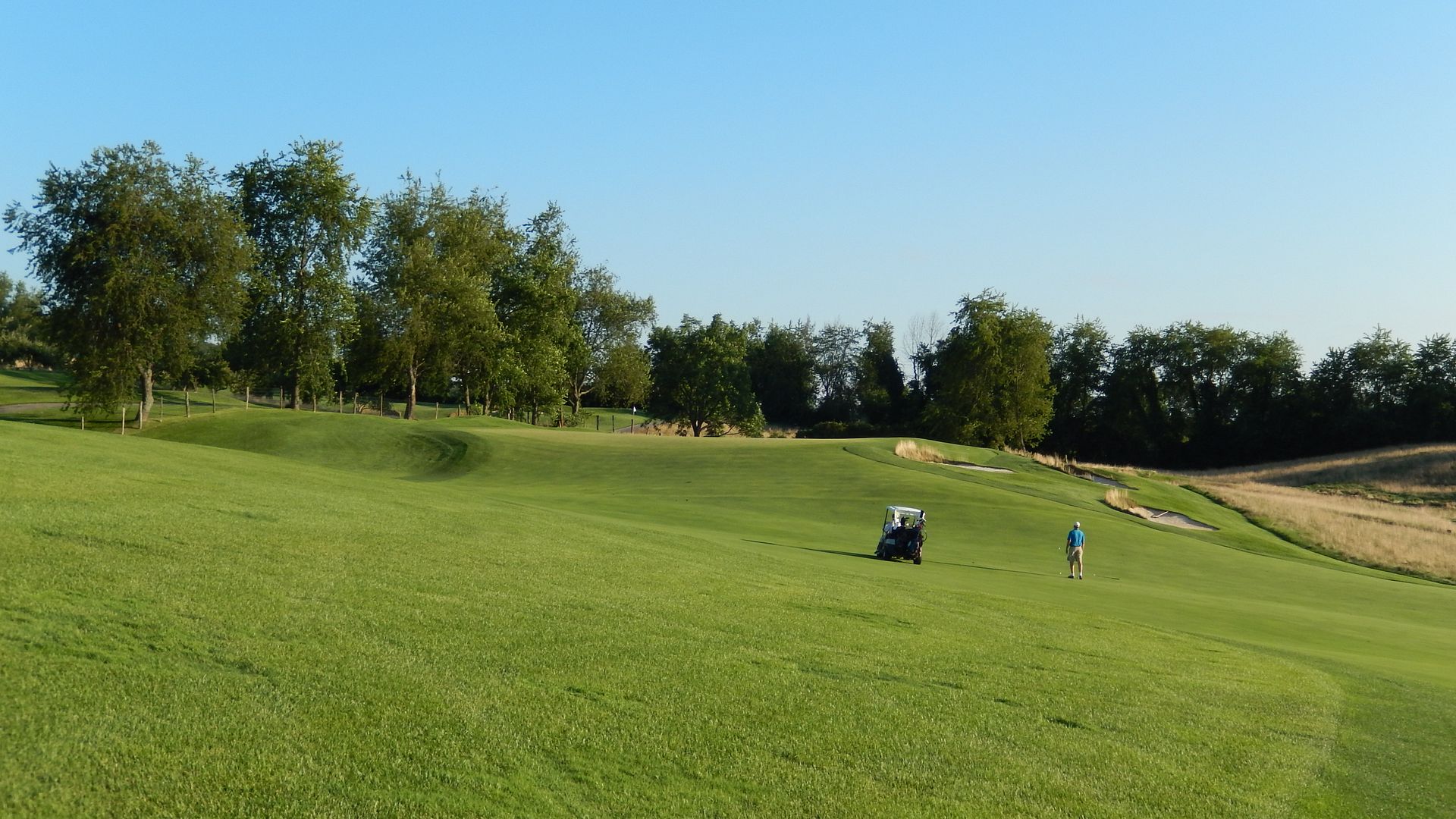
The bye hole is no pushover, a 150 yard skyline par-3 with a severe two-tiered green.
